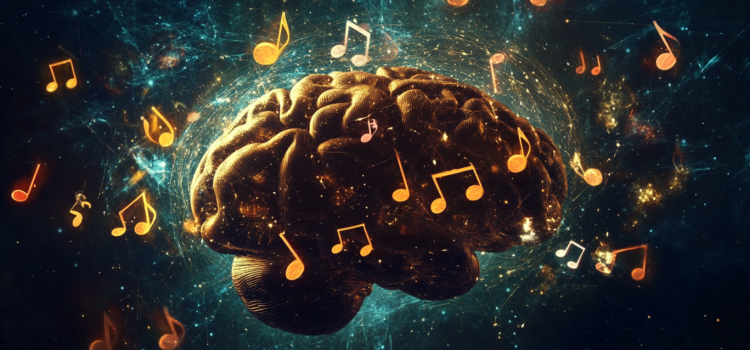
When you listen to music, what happens in your brain? What’s the difference between focused listening and experiential fusion?
In his book I Heard There Was a Secret Chord, neuroscientist and musician Daniel J. Levitin explains how the human brain experiences music. He details why two people experience music differently and why everyone has different tastes.
Continue reading to understand how music works in the brain.
How We Experience Music
How does music work? When you listen to music, your brain engages with what you hear in one of two ways: through focused listening or experiential fusion. These distinct mental states shape not only how you process music in the moment, but also how you form and retain musical memories.
In focused listening, you analyze and attend to the music itself. During this state, your brain methodically processes technical elements like melody, rhythm, and harmony. You notice how different parts of the song work together, paying attention to changes in speed, volume, and the way instruments interact with each other.
(Shortform note: Research suggests that focused listening improves cognitive performance by engaging multiple brain regions simultaneously. When listeners actively analyze musical elements like melody, harmony, and rhythm, they activate sensory-motor areas, memory circuits, and emotional processing centers. This strengthens neural connectivity, enhancing working memory, attention span, and neuroplasticity. These cognitive benefits extend beyond music, improving performance in tasks that require sustained attention and complex information processing. Research shows particular improvements in executive functions like decision-making, problem-solving, and multitasking abilities.)
In contrast, experiential fusion is a more immersive state where the boundary between listener and music begins to blur. This state engages what neuroscientists call the Default Mode Network (DMN)—brain regions associated with mind-wandering and self-reflection. With the DMN engaged, your mind drifts to personal memories or emotions evoked by the music, which causes you to form the rich autobiographical connections that make musical memories particularly enduring. Experiential fusion is what causes the feeling of nostalgia when you hear a song your grandmother used to sing or one that was played at a high school dance.
(Shortform note: Experiential fusion may help explain why taste in music is so personal. As people age, they absorb musical influences from what musicologist Nolan Gasser calls “intracultures”—the smaller social groups within our broader culture, like family, friends, and peer communities. These intracultures shape our musical preferences through repeated exposure and emotional associations. This explains why a Seattle teenager in the early 1990s might form deep connections with grunge music, while someone from a folk music household might develop equally powerful attachments to acoustic instruments and narrative songwriting.)
This dual-state processing explains why people can react so differently to the same music: While two listeners hear identical sounds, the unique emotional states and personal memories the music evokes shape completely different listening experiences. For example, Simon and Garfunkel’s “Bridge Over Troubled Water” might bring joy to one person who sang the song in their high school choir, while making another person feel sad because it reminds them of their late grandmother.
(Shortform note: While people may have different experiences of a similar piece of music based on their emotional state or personal history, some elements of music are universal across cultures. For instance, the soft, slow rhythms of lullabies universally induce a calming sensation that makes listeners feel sleepy and relaxed, while the faster, energetic beats of dance music consistently inspire people to move their bodies and feel more alert. These common responses suggest that despite our different backgrounds, we process and experience music in fundamentally similar ways.)






